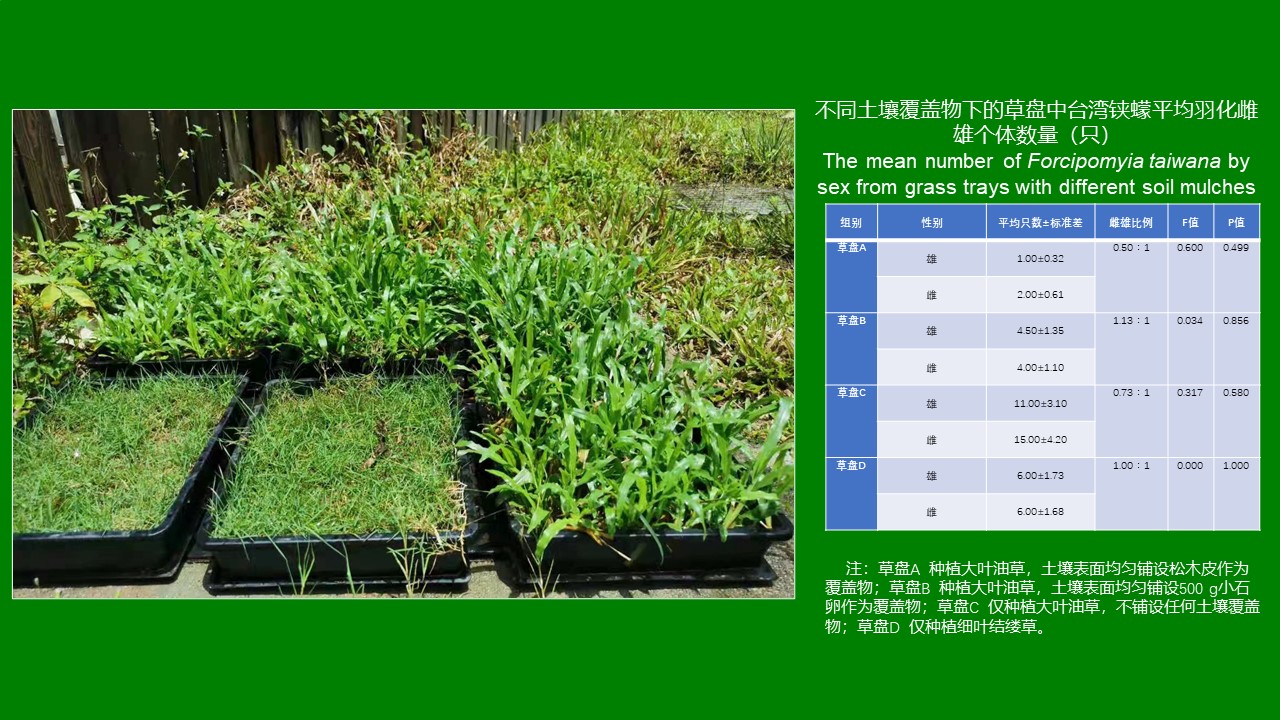 PDF(1354 KB)
PDF(1354 KB)


大叶油草地铺小石卵和松木皮防制台湾铗蠓的效果研究
陈家慧, 周静雅, 刘阳, 唐瑾华, 谢恺琪, 张韶华, 贾凤龙
中国媒介生物学及控制杂志 ›› 2022, Vol. 33 ›› Issue (4) : 586-589.
 PDF(1354 KB)
PDF(1354 KB)
 PDF(1354 KB)
PDF(1354 KB)
大叶油草地铺小石卵和松木皮防制台湾铗蠓的效果研究
 ({{custom_author.role_cn}}), {{javascript:window.custom_author_cn_index++;}}
({{custom_author.role_cn}}), {{javascript:window.custom_author_cn_index++;}}Effects of pebble and pine bark mulches on Axonopus compressus grassland for Forcipomyia taiwana control
 ({{custom_author.role_en}}), {{javascript:window.custom_author_en_index++;}}
({{custom_author.role_en}}), {{javascript:window.custom_author_en_index++;}}
| {{custom_ref.label}} |
{{custom_citation.content}}
{{custom_citation.annotation}}
|
/
| 〈 |
|
〉 |